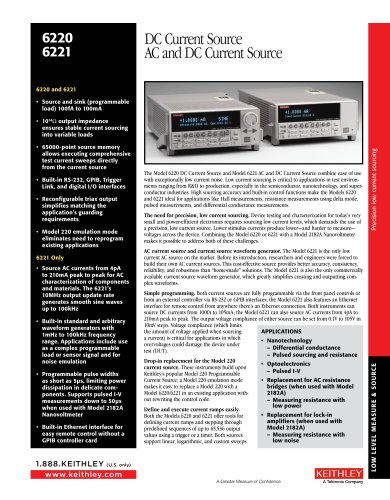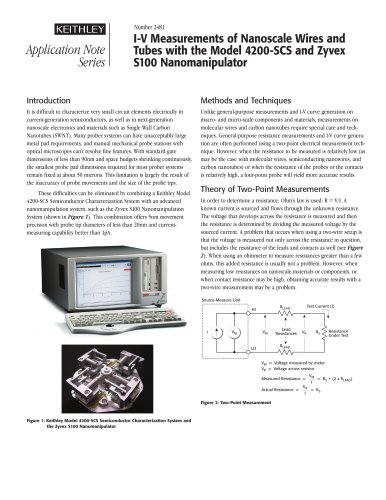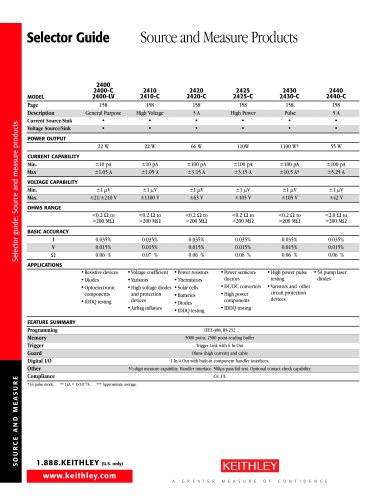 Website:
Keithley Instruments
Website:
Keithley Instruments
Group: Tektronix
Catalog excerpts

Low Level Measurements Handbook Precision DC Current, Voltage, and Resistance Measurements Low Level Measurements Handbook Specifications are subject to change without notice. All Keithley trademarks and trade names are the property of Keithley Instruments, Inc. All other trademarks and trade names are the property of their respective companies. © Copyright 2004 Keithley Instruments, Inc. Printed in U.S.A. Keithley Instruments, Inc. Corporate Headquarters • 28775 Aurora Road • Cleveland, Ohio 44139 • 440-248-0400 • Fax: 440-248-6168 • 1-888-KEITHLEY (534-8453) • www.keithley.com
Open the catalog to page 1
“To get a free electronic version of this book, visit Keithley’s Knowledge Center web page.” a g r e at e r m e a s u r e o f c o n f i d e n c e
Open the catalog to page 2
Low Level Measurements Handbook Precision DC Current, Voltage, and Resistance Measurements SIXTH EDITION
Open the catalog to page 3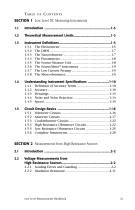
SECTION 1 Low Level DC Measuring Instruments 1.1 SECTION 2 Measurements from High Resistance Sources 2.1 Low Level Measurements Handbook
Open the catalog to page 4
SECTION 3 Measurements from Low Resistance Sources 3.1
Open the catalog to page 5
Low Level Measurements Handbook
Open the catalog to page 6
SECTION 5 Low Level Instrument Selection Guide 5.1 APPENDIX A Low Level Measurement Troubleshooting Guide APPENDIX B Cable and Connector Assembly APPENDIX C Glossary APPENDIX D Safety Considerations INDEX
Open the catalog to page 7
Low Level DC Measuring Instruments
Open the catalog to page 8
FIGURE 1-1: Standard Symbols Used in this Text Prefixes Symbol yoctozeptoattofemtopiconanomicromilli(none) kilomegagigaterapetaexazettayotta- Quantities Symbol Unit volts amperes ohms coulombs seconds watts farads cycles/s degrees EMF current resistance charge time power capacitance frequency temperature
Open the catalog to page 9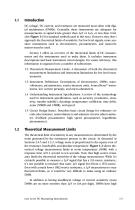
Introduction DC voltage, DC current, and resistance are measured most often with digital multimeters (DMMs). Generally, these instruments are adequate for measurements at signal levels greater than 1µV or 1µA, or less than 1GΩ. (See Figure 1-1 for standard symbols used in this text.) However, they don’t approach the theoretical limits of sensitivity. For low level signals, more sensitive instruments such as electrometers, picoammeters, and nanovoltmeters must be used. Section 1 offers an overview of the theoretical limits of DC measurements and the instruments used to make them. It includes...
Open the catalog to page 10
FIGURE 1-2: Theoretical Limits of Voltage Measurements 103 Noise Voltage Within theoretical limits Source Resistance input offset current1 when measuring voltage and lower input resistance compared to more sensitive instruments intended for low level DC measurements. These characteristics cause errors in the measurement; refer to Sections 2 and 3 for further discussion of them. Given these DMM characteristics, it’s not possible to use a DMM to measure signals at levels close to theoretical measurement limits, as shown in Figure 1-3. However, if the source resistance is 1MΩ or less, or if...
Open the catalog to page 11
FIGURE 1-3: Typical Digital Multimeter (DMM), Nanovoltmeter (nVM), Nanovolt Preamplifier (nV PreAmp), and Electrometer Limits of Measurement at Various Source Resistances 100 Noise Voltage Source Resistance (input burden), which affects low level current measurements, and DMM resolution is generally no better than 1nA. Thus, an electrometer or picoammeter with its much lower input burden and better sensitivity will operate at levels much closer to the theoretical (and practical) limits of low current measurements. Instrument Definitions A number of different types of instruments are...
Open the catalog to page 12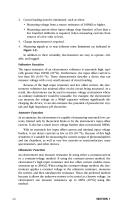
2. Circuit loading must be minimized, such as when: • Measuring voltage from a source resistance of 100MΩ or higher. • Measuring current when input voltage drop (burden) of less than a few hundred millivolts is required (when measuring currents from sources of a few volts or less). 3. Charge measurement is required. 4. Measuring signals at or near Johnson noise limitations (as indicated in Figure 1-2). In addition to their versatility, electrometers are easy to operate, reliable, and rugged. Voltmeter Function The input resistance of an electrometer voltmeter is extremely high, typically...
Open the catalog to page 13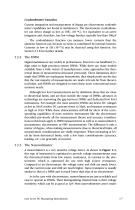
Coulombmeter Function Current integration and measurement of charge are electrometer coulombmeter capabilities not found in multimeters. The electrometer coulombmeter can detect charge as low as 10fC (10–14C). It’s equivalent to an active integrator and, therefore, has low voltage burden, typically less than 100µV. The coulombmeter function can measure lower currents than the ammeter function can, because no noise is contributed by internal resistors. Currents as low as 1fA (10–15A) may be detected using this function. See Section 2.3.8 for further details. 1.3.2 The DMM Digital multimeters...
Open the catalog to page 14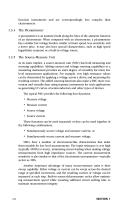
function instruments and are correspondingly less complex than electrometers. 1.3.4 The Picoammeter A picoammeter is an ammeter built along the lines of the ammeter function of an electrometer. When compared with an electrometer, a picoammeter has a similar low voltage burden, similar or faster speed, less sensitivity, and a lower price. It may also have special characteristics, such as high speed logarithmic response or a built-in voltage source. 1.3.5 The Source-Measure Unit As its name implies, a source-measure unit (SMU) has both measuring and sourcing capabilities. Adding current and...
Open the catalog to page 15
1.3.6 The SourceMeter® Instrument The SourceMeter instrument is very similar to the source-measure unit in many ways, including its ability to source and measure both current and voltage and to perform sweeps. In addition, a SourceMeter instrument can display the measurements directly in resistance, as well as voltage and current. The typical SourceMeter instrument doesn’t have as high an input impedance or as low a current capability as a source-measure unit. The SourceMeter instrument is designed for general-purpose, high speed production test applications. It can be used as a source for...
Open the catalog to page 16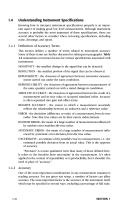
Understanding Instrument Specifications Knowing how to interpret instrument specifications properly is an important aspect of making good low level measurements. Although instrument accuracy is probably the most important of these specifications, there are several other factors to consider when reviewing specifications, including noise, deratings, and speed. 1.4.1 Definition of Accuracy Terms This section defines a number of terms related to instrument accuracy. Some of these terms are further discussed in subsequent paragraphs. Table 1-1 summarizes conversion factors for various...
Open the catalog to page 17All Keithley Instruments catalogs and technical brochures
-
6220-6221
5 Pages
-
6482
3 Pages
-
2520
8 Pages
-
2606B
13 Pages
-
2601B
20 Pages
-
AFG1000 Series
13 Pages
-
AFG31000 Series Datasheet
22 Pages
-
2182A Nanovoltmeter
6 Pages
-
6 Series B MSO
69 Pages
-
8 Series Sampling Oscilloscope
14 Pages
-
8 Series Sampling Oscilloscope
14 Pages
-
Isolated Measurement Systems
8 Pages
-
TBS1000B-EDU Series
14 Pages
-
3 Series MDO
36 Pages
-
4 Series MSO
40 Pages
-
TSG4100A Series
24 Pages
-
2461-EC Graphical Potentiostat
16 Pages
-
2460-EC Graphical Potentiostats
15 Pages
-
2450-EC Graphical Potentiostat
15 Pages
-
4200A-SCS Parameter Analyzer
45 Pages
-
MDO4000C Series Datasheet
43 Pages
-
RTPA2A
6 Pages
-
TPA-N-PRE Datasheet
4 Pages
-
DPO4PWR·MDO3PWR Datasheet
6 Pages
-
DPO4LMT/MDO3LMT Datasheet
6 Pages
-
DPO7000 Series Datasheet
28 Pages
-
SourceXpress® Datasheet
4 Pages
-
10G-KR Datasheet
8 Pages
-
DPO70000SX Series Datasheet
46 Pages
-
AWG4000 Series Datasheet
20 Pages
-
TLA6400 Series Datasheet
14 Pages
-
Potentiostats 2450-EC
8 Pages
-
4200-SCS
16 Pages
-
2013 Keithley product catalog
403 Pages
-
Nanotechnology Measurement
13 Pages
-
Semiconductor Device Test
11 Pages
-
Series 2400 SourceMeter®Family
16 Pages
Archived catalogs
-
Multimeter/Switch System
1 Pages






































































